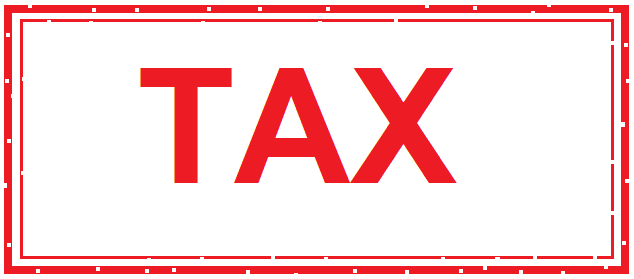Is the EU ready for a Common Consolidated Corporate Tax Base?

In 2011, an ambitious Common Consolidated Corporate Tax Base (CCCTB) directive was proposed by the European Commission. It sought to harmonise the 28 different corporate tax codes of the Member States into one set of rules while retaining the right of Member States to set their own national tax rates. This would facilitate cross-border trade and curb aggressive tax planning, bringing the European Union closer towards a stronger and fairer single market. Yet the CCCTB proved too ambitious for some and was blocked in the European Council.
However, as it is often said: If one does not succeed the first time, try again. On October 2016, the CCCTB was relaunched by the European Commission. Since then, the CCCTB has undergone modifications and gained considerable political traction. On March 15th, 2018, Members of European Parliament approved the CCCTB by 438 votes to 145 votes (with 69 abstentions) in their plenary session and the CCCTB will once again face the European Council.
Cross-border Corporate Taxation
Currently, there are 28 different corporate tax systems and tax administrators in the EU. A corporate group wishing to calculate the profits and losses of its subsidiaries within the EU needs to deal with each Member State’s corporate tax code and their tax administrators alongside bilateral tax treaties the Member States may have with one another. In addition, international transfer pricing rules on determining taxation of intra-group transactions are highly complex and often lead to costly disputes.
This disorganised structure of the status quo often renders corporations unable to offset their losses in one Member State against profits in another, leading to double taxation. In addition, the steady increase in tax avoidance schemes has seen an increase in national anti-avoidance regulations that are uncoordinated at the supranational level. This adds to the complexity of the international tax system, exacerbating administrative costs for both tax administrations and corporations. The consequence is one where businesses spend time and taxable revenue on compliance while budding enterprises are deterred from expanding across the EU altogether.
Profit Shifting
Perhaps the most pressing issue is that of tax avoidance through profit shifting. Recent events such as the Paradise Papers and tech giants caught in tax scandals reveal the extent of manipulation in the international corporate tax system. Take tech company Apple for example: Through the infamous manoeuvre known as the ‘Double Irish with a Dutch Sandwich,’ Apple’s subsidiaries based in Ireland managed to pay an effective corporate tax rate of 1% from 2003 down to as little as 0.005% in 2014 on all its European profits, an estimate avoidance of €13 billion! Such practices have been adopted by large multinational enterprises across the EU; Google in Ireland, Starbucks in the Netherlands, and Ikea and Amazon in Luxembourg just to name a few.
In a nutshell, Apple’s manoeuvre and variations of it involve placing intellectual property of the corporate group in subsidiaries located in tax-friendly Member States. Profits made in jurisdictions with higher corporate tax rates are then shifted to these subsidiaries through royalty payments where they are taxed at minimal rates through ‘state aid’ or ‘sweetheart deals.’ After which, the profits can be transferred back to the parent company or stored in offices existing only on paper where they go virtually untaxed. This method of profit shifting is a type of intra-group transaction which transfer pricing rules, as mentioned earlier, are designed to capture. However, the difficulty amongst other factors, lies in quantifying value of intangible assets such as intellectual property. In total, the Organization for Economic Co-operation and Development has estimated that revenue loss from profit shifting practices at the global level is at 4-10% of corporate income tax revenue, which translates to $100-240bn annually at 2014 levels. Similarly, a study by the European Parliamentary Research Service estimated revenue loss from profit shifting practices in the EU at €50-70bn, which roughly translates to 17-23% of EU corporate income tax revenue in 2013.
This increase in profit shifting practices coupled with the increase in capital mobility has in turn fostered an environment where Member States protect and compete for wider tax bases. This leads to Member States lowering their statutory corporate tax rates to attract corporations to establish residence and investments in their nation. More extreme measures can be evidenced by ‘state aid’ or ‘sweetheart tax deals’ practised by Member States such as Luxembourg, Ireland and the Netherlands.
One prominent example is the Luxembourg Leaks in 2014. The leaks by the International Consortium of Investigative Journalists revealed secret tax deals granted by Luxembourgish authorities to more than 350 companies worldwide in exchange for ‘intended investments’ in the country of up to $215bn from 2002-2010. The status quo points toward a regulatory race to the bottom, where corporations save billions by taking residence in the most tax advantageous Member States and big accounting firms profit off heavy cross-border compliance work. Meanwhile, cuts in national corporate income tax rates will force governments to raise taxes on citizens and domestic businesses to fill the gap or to lower public spending.
CCCTB to Combat Profit Switching
The relaunched CCCTB would address these issues in two stages. First, through a Common Corporate Tax Base (CCTB), where a single set of rules for calculating taxable corporate revenues in the EU will replace the 28 corporate tax systems. This will be followed by consolidation (CCCTB), where a corporate group can simply add up all its profits and losses across the EU and consolidate it at the level of the group’s parent company. An apportionment formula based on four equally-weighted factors: labour, assets, sales by destination and now data, will calculate how the taxable profits are to be shared amongst the Member States where the corporate group has been active.
A Common Corporate Tax Base would streamline tax compliance by creating a ‘one stop shop’ for determining tax liabilities. A corporate group with multiple subsidiaries would only have to deal with one set of corporate tax rules and one tax administrator in determining their overall tax liability within the EU. Consolidation treats the corporate group and its subsidiaries within the EU as one single entity for tax purposes. This is vital for businesses as it recognizes their cross-border activities, allowing them to offset their losses in one Member State with the profits made in another, resolving double taxation. In addition, consolidation would also replace transfer pricing rules, a significant cost-aspect of compliance under the status quo. A study commissioned by Deloitte Tax Experts reveals that the CCTB would cut compliance time on average by approximately 10% and compliance costs by 2.5%. With consolidation, the removal of transfer pricing practices would drastically reduce compliance time by 70% and compliance costs by approximately 62% for a corporate group with a large parent and 67% for that of a medium-sized parent. This reduction in compliance costs and the ability for cross-border loss offset would facilitate cross-border investments and expansion of small businesses across the EU.
Fairer to Members
The CCCTB and its formula apportionment tackle tax avoidance by taxing businesses where their profits are generated or where their real economic substance lies, instead of a residence-based approach. Businesses would no longer be able to exploit the mismatches within tax systems under a common set of rules and the disregard for transfer pricing activities would largely eliminate any profit shifting within the EU. Furthermore, the CCCTB has been proposed as mandatory for all corporate groups with a turnover of €750m in a financial year, capturing large multinationals capable of aggressive tax planning. The European Parliament has also approved an additional factor of ‘data’ in the apportionment formula. This is a measure targeting tech companies that do not require a strong physical presence (labour) or infrastructure (assets) to generate profits in the EU. Although calculating profits based on mining of personal data sounds promising, technical issues such as what would amount as data have not been worked out. However, if this proves to be administratively possible, it would finally address the pressing issue of profit-shifting by tech giants.
Though profit-shifting would be eliminated under the CCCTB, tax avoidance could still be achieved via ‘factor-shifting’ since corporate tax rates are not harmonised. This could be done by structuring factors such as sales through ‘independent’ distributors in the Member States with lower tax rates. However, the CCCTB will make tax avoidance harder to achieve than under the status quo. Factor-shifting involves real factors that are affected by the quality of skilled talent and infrastructure present in the Member States which book profit-shifting is not concerned with. Indeed, with an apportionment formula, a drastic reduction in tax avoidance and mobile tax bases would deter Member States from engaging in statutory tax competition.
Ambitions May Still Be Thwarted
The CCCTB shows notable potential in addressing the pressing problems facing the European corporate tax system. It contains elements that make a good tax: administrative simplicity, certainty, and fairness. On top of addressing tax compliance, tax avoidance and improving taxpayer morale, the directive also contains additional measures to incentivise European R&D while discouraging heavy debt-financing. The CCCTB appears to be the solution to a single, clearer and fairer EU corporate tax system that will strengthen the single market.
However, there remain several obstacles with the directive. The CCCTB addresses tax avoidance at the European level. This may still allow corporate groups to profit-shift to third countries. As such, a comprehensive Anti-Tax Avoidance Directive dealing with non-EU countries is needed. Perhaps the biggest obstacle facing the CCCTB is the unanimous approval required from the Council. With the removal of profit shifting measures, Member States that rely heavily upon such measures for corporate investment and tax revenue, such as those aforementioned, would most likely disapprove. Furthermore, a comprehensive country-by-country impact assessment has not yet been carried out. With the possibility of tax base reductions of several Member States, this may deter some from the adoption of the directive. Perhaps a CCCTB may prove to be still too ambitious for some. One thing is for certain, urgent tax reform within the European Union is needed
Source: marketMogul – EUROPEIs the EU Ready for a Common Consolidated Corporate Tax Base?





























